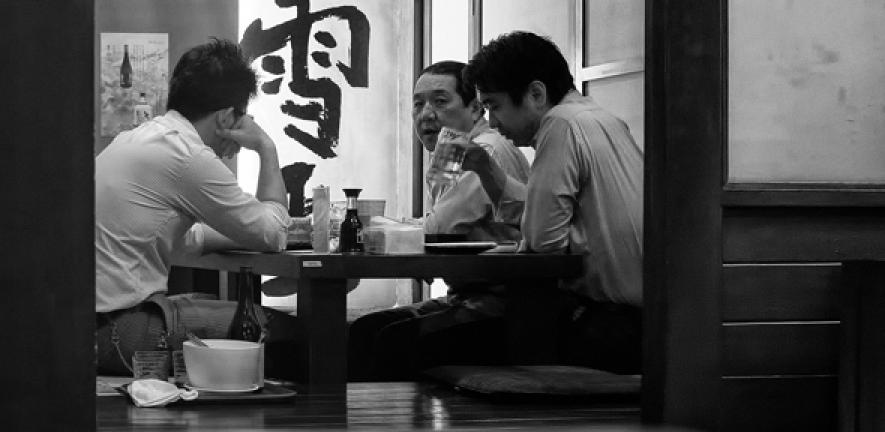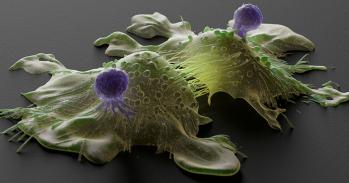
A common class of chemicals found everywhere from car exhausts, smoke, building materials and furniture to cosmetics and shampoos could increase cancer risk because of their ability to break down the repair mechanisms that prevent faults in our genes, according to a study published today in the journal Cell.
A common class of chemicals found everywhere from car exhausts, smoke, building materials and furniture to cosmetics and shampoos could increase cancer risk because of their ability to break down the repair mechanisms that prevent faults in our genes, according to a study published today in the journal Cell.
Our study helps to explain why ‘the faults in our stars’ – namely the faulty genes we are born with – could make some people particularly sensitive to the cancer-causing effects of these chemicals
Ashok Venkitaraman
Aldehydes are a class of chemicals made in our own bodies in small quantities but increasingly found everywhere in our environment. Exposure to these chemicals has previously been linked with cancer, but the reasons for the link remain unclear.
New research led by Professor Ashok Venkitaraman, Director of the Medical Research Council Cancer Unit at the University of Cambridge, has used genetically-engineered human cells and cells from patients bearing a faulty copy of the breast cancer gene BRCA2 to identify the mechanism by which exposure to aldehydes could promote cancer.
Damage to our DNA, which arises frequently as cells in our bodies divide, can lead to the development of cancers, but our body has its own defence mechanism that helps repair this damage. However, Professor Venkitaraman and colleagues found that aldehyde exposure breaks down this defence mechanisms even in normal healthy cells, but people who have inherited a faulty copy of BRCA2 are particularly sensitive to such damage.
Everyone is born with two copies of most genes. People who inherit a single faulty copy of the BRCA2 gene are susceptible to cancer. The reason why is not fully understood, because their cells should be able to repair DNA using the lower – but still adequate – levels of BRCA2 protein made from the remaining, intact copy of the gene.
This new study shows that aldehydes trigger the degradation of BRCA2 protein in cells. In people who inherit one faulty copy of the BRCA2 gene, this effect pushes down BRCA2 protein levels below the amount required for adequate DNA repair, breaking down the normal mechanisms that prevent mutations, which could promote cancer formation.
Around one in 100 people may carry a faulty BRCA2 gene, putting them at risk of developing breast, ovarian, prostate and pancreatic cancer. Exposure to aldehydes could increase their chances of developing these cancers.
“Our study shows how chemicals to which we are increasingly exposed in our day-to-day lives may increase the risk of diseases like cancer,” says Professor Venkitaraman. “It also helps to explain why ‘the faults in our stars’ – namely the faulty genes we are born with – could make some people particularly sensitive to the cancer-causing effects of these chemicals.
“An important implication of our work is that it may be aldehyde exposure that triggers cancer susceptibility in people who inherit one faulty copy of the BRCA2 gene. This may help us in future to prevent or treat cancer in such people.”
One common potential source of aldehydes is alcohol: our body converts the alcohol that we drink into acetaldehyde, one such chemical. Ordinarily, this is broken down by a natural enzyme known as acetaldehyde dehydrogenase, but over 500 million people mainly from countries such as Japan, China and Korea inherit a faulty gene, ALDH2, that inactivates this enzyme. This is why many Asian people develop flushes when they drink, but could mean they are also particularly sensitive to the cancer-promoting effect.
This new research shows that aldehyde accumulation in such people could trigger cancer susceptibility by degrading BRCA2, compromising DNA repair, whether or not they inherit a faulty copy of BRCA2. An estimated 30-60% of people from Japan, Korea and China carry the faulty ALDH2 and may therefore be at risk from cancer through this new mechanism.
Reference
Tan, SLW et al. A class of environmental and endogenous toxins induces BRCA2 haploinsufficiency and genome instability. Cell; 1 Jun 2017; DOI: 10.1016/j.cell.2017.05.010

The text in this work is licensed under a Creative Commons Attribution 4.0 International License. For image use please see separate credits above.




